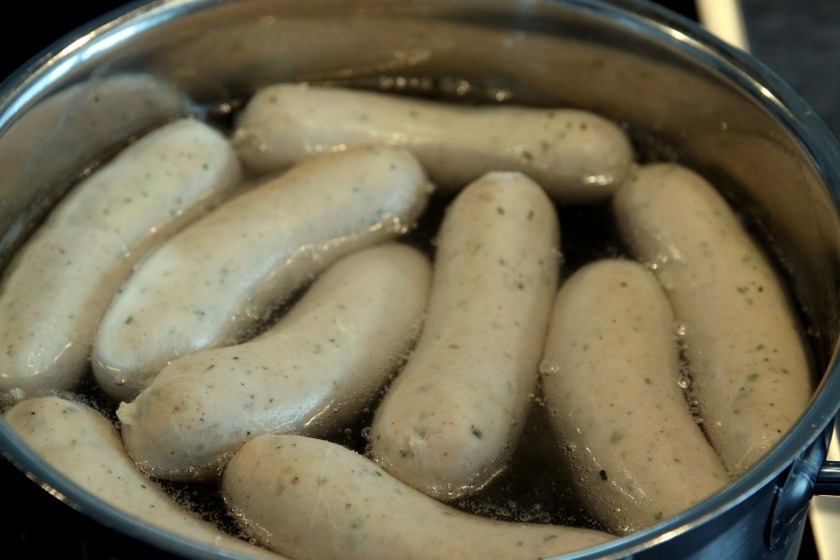Easter is a big thing in the Catholic church. Poland, being a predominantly Catholic country spends a lot of time preparing and celebrating this holiday. As a part of the festivities, families and friends gather around tables to bond over meals. The dishes that are prepared have changed and evolved over the years, following culinary trends and being influenced by cuisines from all over the world. There are however a few staples, that should not be missing on any Easter table.
-
Żurek (zhoo-reck)

Żurek is a white, slightly spicy soup, based on sourdough made from rye flour. It is often served with pieces of sausage and/or hard-boiled eggs. An essential spice, added to żurek, is marjoram. Some also add a spoonful of horseradish. The soup is usually eaten as apart of breakfast on Easter Sunday. -
Vegetable salad

There is probably not a single other dish, that would be more of a Slavic staple than the traditional salad made from boiled vegetables. Usually consisting of potatoes, carrots, celery, parsnip, eggs, sour cucumbers as a base, and sometimes also accompanied by corn and apples, it is mixed with salt, pepper and a lot of mayonnaise. Although not the most photogenic salad ever, it makes an appearance on many Polish tables for different special occasions – Easter, Christmas, birthday parties, etc.

-
Eggs

Dating back to pre-Christian times and symbolising new life and fertility, eggs are omnipresent for Easter probably everywhere. Boiled, fried, deviled, chocolate – you name it. In Poland we also make “kraszanki”- colorful eggs, covered with wax, on which you scratch out patterns with a sharp tool – and “pisanki”, which are painted ones. Decorating eggs is always plenty of EGGciting fun both for kids and adults. This year, I did the math and it turns out that my family will eat around 40 eggs in 2 days (including the ones used for baking, battering meat before frying, etc.). We don’t really do the egg hunt, known from the UK, but if you’ve been good, the Easter Bunny might bring you a bunch of chocolate eggs and other treats anyway.

-
White sausage

It is believed that white sausage, made from pork meat, is present on Polish Easter tables since the XVII century. It is unsmoked, seasoned with garlic and marjoram, and it’s usually served boiled or baked. Apart from being a separate dish, it is also often added either as a whole or sliced to żurek. -
Lamb

Whether savory or sweet, made from dough, sugar, chocolate or often formed from butter, the Easter lamb is a must. It is a symbolic representation of Jesus and comes in many forms, shapes, and sizes. At my home, it’s usually the butter version, where a few days before you need to buy a stick of butter, place it in a special sheep-shaped wooden form and let the magic happen. Then during Easter, we spread it on bread. -
Babka

It can be a sponge cake, a yeast one, or another variation. Regardless of your preference, babka is an Easter staple. Traditionally, it’s prepared in a wavy baking form, which slightly explains the name. “Babka” is supposedly derived from “babcia”, which means grandmother and the wavy form is said to resemble a grandma’s skirt.
-
Mazurek (maz-ooreck)

Mazurek is a pastry, that’s not really baked at any other time during the year. Its time to shine is specifically Easter. A very sweet kind of flat shortbread is believed to have come to Poland centuries ago from Turkey. Nowadays it is hard to imagine not having at least one on the table during Easter. Even if you don’t intend to make it yourself, you usually buy a tiny one to put in the Easter basket, filled with symbolic food, that’s traditionally taken on Saturday to church to be blessed. However, there is no one special pattern or agreement on how the mazurek should look like. It all depends on who makes it. There is only one rule – it has to be VERY sweet.